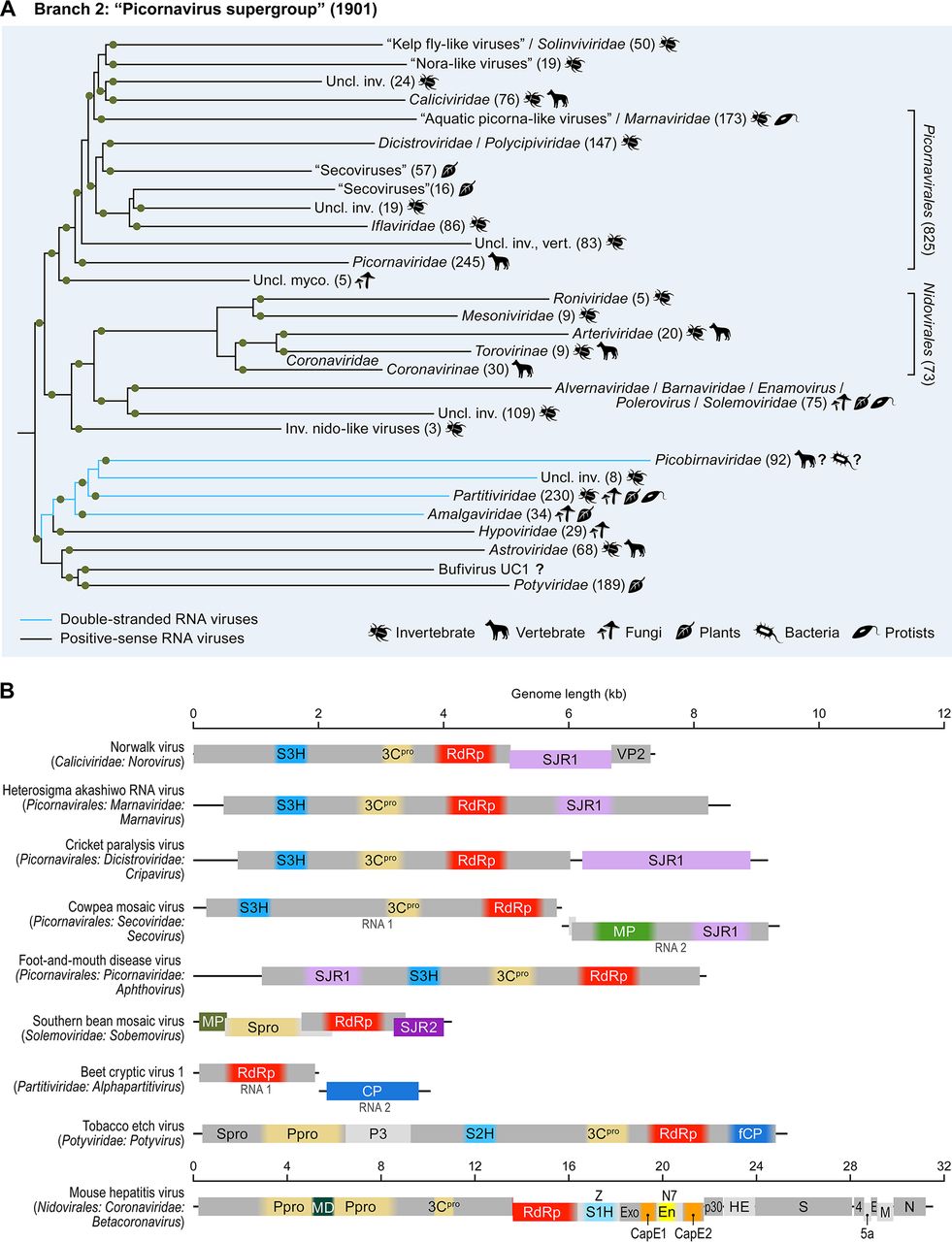Pisuviricota on:
[Wikipedia]
[Google]
[Amazon]
''Pisuviricota'' is a phylum of RNA viruses that includes all positive-strand and
Viruses of fungi and oomycetes in the soil environment
Oxford Academic.
 The following classes are recognized:
* ''
The following classes are recognized:
* ''
double-stranded RNA viruses
Double-stranded RNA viruses (dsRNA viruses) are a polyphyletic group of viruses that have double-stranded genomes made of ribonucleic acid. The double-stranded genome is used to transcribe a positive-strand RNA by the viral RNA-dependent RNA pol ...
that infect eukaryote
Eukaryotes () are organisms whose cells have a nucleus. All animals, plants, fungi, and many unicellular organisms, are Eukaryotes. They belong to the group of organisms Eukaryota or Eukarya, which is one of the three domains of life. Bacte ...
s and are not members of the phylum ''Kitrinoviricota
''Kitrinoviricota'' is a phylum of RNA viruses that includes all positive-strand RNA viruses that infect eukaryotes and are not members of the phylum ''Pisuviricota'' or ''Lenarviricota.'' The name of the group derives from Greek ''κίτριν� ...
,'' ''Lenarviricota
''Lenarviricota'' is a phylum of RNA viruses that includes all positive-strand RNA viruses that infect prokaryotes. Some members also infect eukaryotes. Most of these viruses do not have capsids, except for the genus ''Ourmiavirus''. The name of ...
'' or ''Duplornaviricota
''Duplornaviricota'' is a phylum of RNA viruses, which contains all double-stranded RNA viruses, except for those in phylum ''Pisuviricota.'' Characteristic of the group is a viral capsid composed of 60 homo- or heterodimers of capsid protein on ...
.'' The name of the group is a syllabic abbreviation
An abbreviation (from Latin ''brevis'', meaning ''short'') is a shortened form of a word or phrase, by any method. It may consist of a group of letters or words taken from the full version of the word or phrase; for example, the word ''abbrevia ...
of “''pi''cornavirus ''su''pergroup” with the suffix ''-viricota'', indicating a virus phylum. Phylogenetic analyses suggest that ''Birnaviridae
''Birnaviridae'' is a family of double-stranded RNA viruses. Salmonid fish, birds and insects serve as natural hosts. There are currently 11 species in this family, divided among seven genera. Diseases associated with this family include infec ...
'' and ''Permutotetraviridae
''Permutotetraviridae'' is a family of viruses
A virus is a submicroscopic infectious agent that replicates only inside the living cells of an organism. Viruses infect all life forms, from animals and plants to microorganisms, inclu ...
'', both currently unassigned to a phylum in ''Orthornavirae'', also belong to this phylum and that both are sister groups. Another proposed family of the phylum is unassigned '' Polymycoviridae'' in ''Riboviria''.Suvi Sutela, Anna Poimala, Eeva J Vainio (2019)Viruses of fungi and oomycetes in the soil environment
Oxford Academic.
Classes
 The following classes are recognized:
* ''
The following classes are recognized:
* ''Duplopiviricetes
''Durnavirales'' is an order of double-stranded RNA viruses which infect eukaryotes. The name of the group derives from Italian ''duplo'' which means double (a reference to double-stranded), ''rna'' for the type of virus, and -''virales'' which i ...
''
* ''Pisoniviricetes
''Pisoniviricetes'' is a class of positive-strand RNA viruses which infect eukaryotes. A characteristic of the group is a conserved 3C- like protease from the PA clan of proteases for processing the translated polyprotein. The name of the gro ...
''
* ''Stelpaviricetes
''Stelpaviricetes'' is a class of non-enveloped, positive-strand RNA viruses which infect plants and animals. Characteristic of the group is a VPg protein attached to the 5'-end of the genome and a conserved 3C- like protease from the PA clan ...
''
References
Viruses {{Virus-stub